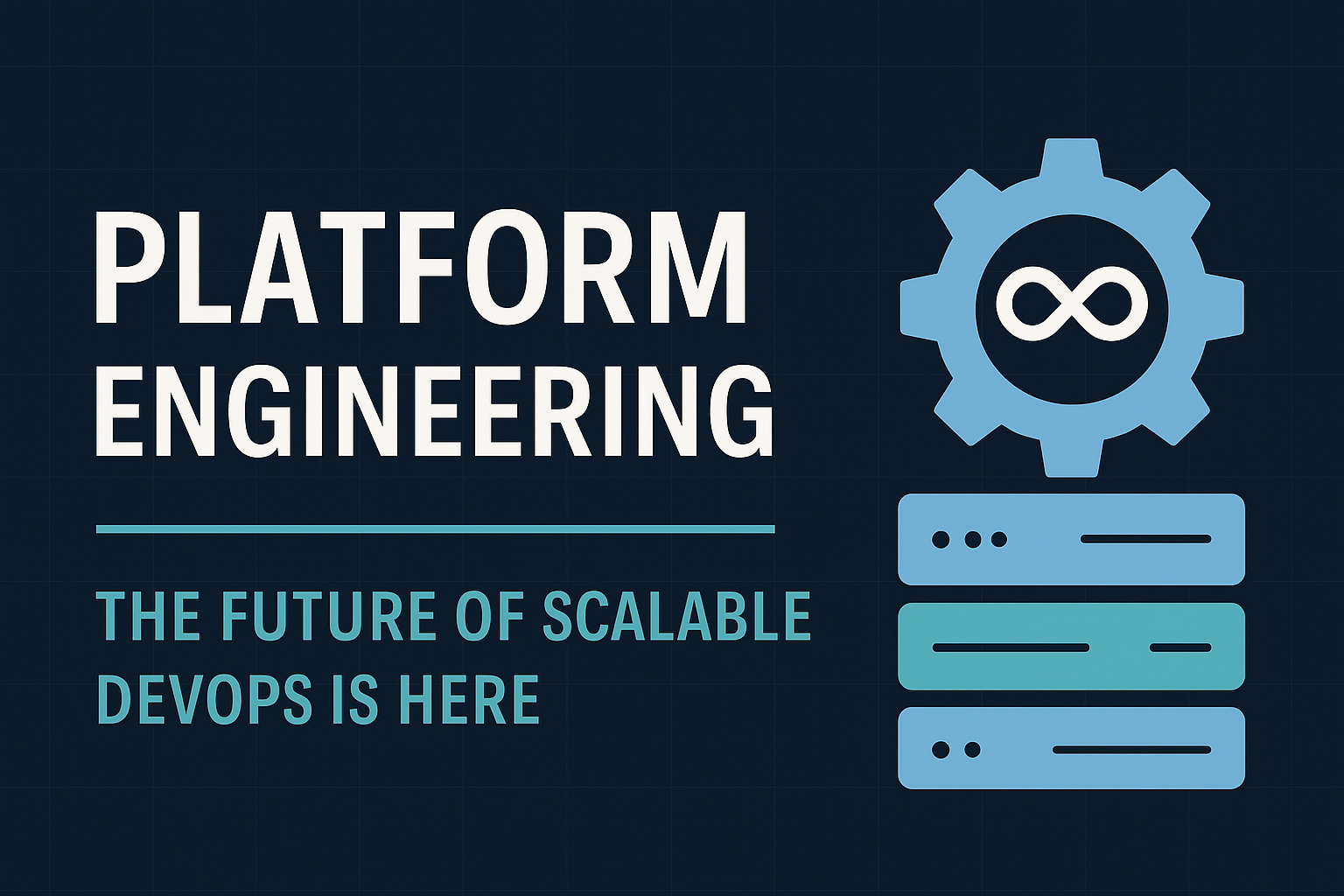Platform Engineering: The Future of Scalable DevOps is Here
Platform Engineering is no longer just a buzzword — it’s the strategic backbone for scalable, secure, and efficient software delivery.

According to industry projections, 80% of organizations will adopt platform engineering by 2026 — and for good reason. As DevOps evolves, the need for consistent, self-service infrastructure becomes mission-critical.
What is Platform Engineering?
Platform Engineering is the practice of building Internal Developer Platforms (IDPs) — curated sets of tools, workflows, and services that developers use on-demand to ship software faster and more securely.
Think of it as DevOps-as-a-Service, built by platform teams for product teams.
Why Is It Trending?
✔️ Self-Service Developer Experience (DX): Developers don’t want to worry about YAML, IaC, or CI/CD pipelines. They want ready-to-use environments with guardrails.
✔️ Standardization: IDPs promote consistent tooling, naming, observability, and security policies across teams.
✔️ Scalability: As organizations grow, so do the complexities. Platform engineering helps abstract complexity, reducing cognitive load for developers.
✔️ Speed with Safety: Enables fast deployments without sacrificing compliance or governance.
Real-World Tools Behind It
- Backstage (by Spotify) – Developer portal to streamline internal tooling
- Crossplane / Terraform – Declarative IaC under the hood
- Argo CD / Flux – GitOps for managing infrastructure & applications
- Kubernetes + Service Mesh – Standard compute layer with network policies
- OPA / Kyverno – Policy enforcement at scale
Business Impact
✅ Faster time-to-market
✅ Improved developer productivity
✅ Reduced operational overhead
✅ Stronger compliance and security posture
How to Implement Platform Engineering in Your Organization
Step 1: Define the Platform Vision
- Objective: Align stakeholders on why you’re building a platform.
- Deliverables:
- Define use cases: Self-service CI/CD, environment provisioning, security enforcement.
- Set KPIs: Time to deploy, lead time, change failure rate, developer satisfaction.
Step 2: Build a Dedicated Platform Team
- Form a cross-functional team with expertise in:
- DevOps, SRE, Cloud Infrastructure
- Developer Experience (DX)
- Security & Compliance
- Goal: Treat the platform as a product, with developer teams as customers.
Step 3: Design the Internal Developer Platform (IDP) Architecture
Include these core layers:
| Layer | Description |
|---|---|
| Compute | Kubernetes, ECS, Serverless (e.g., AWS Lambda) |
| Networking | Ingress, service mesh (Istio, Linkerd), API gateways |
| Infrastructure as Code | Terraform, Crossplane, Pulumi |
| CI/CD Pipelines | GitHub Actions, GitLab CI, Jenkins, Argo Workflows |
| Observability | Prometheus, Grafana, Datadog, OpenTelemetry |
| Security/Policy | OPA, Kyverno, AWS IAM, HashiCorp Vault |
| Developer Portal | Backstage or custom-built dashboard |
Step 4: Enable Self-Service Workflows
- Use Backstage or build custom portals for:
- Provisioning sandbox environments
- Triggering CI/CD pipelines
- Monitoring and logging dashboards
- Provide templated blueprints (e.g., Terraform modules, Helm charts) for app onboarding.
Step 5: Integrate GitOps Principles
- Use Git as the single source of truth for:
- Infrastructure (Terraform or Crossplane)
- App manifests (Helm, Kustomize)
- Tools: Argo CD or Flux for continuous delivery.
Step 6: Establish Guardrails and Governance
- Automate:
- Policy-as-Code (using OPA or Kyverno)
- Secret management (using Vault or SOPS)
- Cost controls (via tagging, budget alerts)
Step 7: Onboard Dev Teams & Gather Feedback
- Create:
- Documentation, walkthroughs, and onboarding videos
- Slack channels or support queues for feedback
- Run feedback loops and treat developers as customers.
Step 8: Continuously Improve the Platform
- Measure platform adoption, satisfaction, and performance.
- Regularly update blueprints, improve workflows, and automate more.
Example Use Case
A developer logs into Backstage, picks a Node.js microservice template, fills out a form → Platform provisions repo, CI/CD pipeline, K8s namespace, monitoring, and alerts — all automatically.
#PlatformEngineering,#InternalDeveloperPlatform,#DevOps
